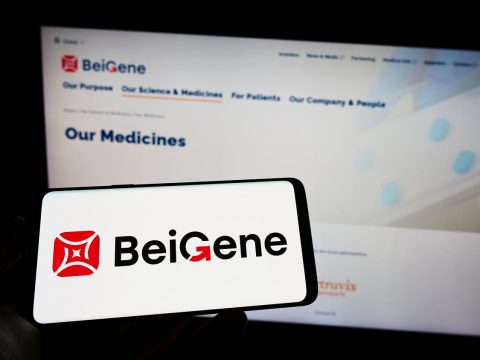Advertisment
Phase III study of subcutaneous daratumumab combination treatment shows positive response in light chain (AL) amyloidosis.- Janssen R&D
The Janssen Pharmaceutical Companies of Johnson & Johnson announced results from the first randomized Phase III study investigating subcutaneous Darzalex (daratumumab) in the treatment of patients with newly diagnosed light chain (AL) amyloidosis, a rare and potentially fatal disease. The data demonstrated subcutaneous daratumumab in combination with cyclophosphamide, bortezomib, and dexamethasone (D-CyBorD) resulted in a higher hematologic complete response rate (CR), (53 percent vs. 18 percent [P<0.0001]), compared to CyBorD.
Additionally, treatment with D-CyBorD delayed the time to major organ deterioration progression-free survival (MOD-PFS), and enhanced event-free survival (MOD-EFS) based on MOD-PFS criteria with the time to initiation of next therapy. The combination showed a safety profile consistent with subcutaneous daratumumab or CyBorD alone.
Results from the ANDROMEDA study showed that the primary endpoint, hematologic CR rate, was 53 percent for D-CyBorD and 18 percent for CyBorD (Odds Ratio=5.1; 95 percent confidence interval [CI], 3.2-8.2; P<0.0001). In addition, patients receiving D-CyBorD achieved higher rates of overall hematologic response (92 percent vs. 77 percent) and very good partial response or better (at least VGPR; 79 percent vs. 49 percent) than patients receiving CyBorD. Among the 195 patients who achieved at least a VGPR to treatment within the D-CyBorD arm, median time to at least VGPR/CR was 17/60 days, compared to the 193 patients in the CyBorD arm whose median time to at least VGPR/CR was 25/85 days. The six-month organ response rate was nearly doubled for patients treated with D-CyBorD versus CyBorD, for both cardiac (42 percent vs. 22 percent; P=0.0029) and renal (54 percent vs. 27 percent; P<0.0001) responses. Additionally, MOD-PFS (Hazard Ratio [HR]=0.58; 95 percent CI, 0.36-0.93, P=0.0224) and MOD-EFS (HR=0.40; 95 percent CI, 0.28-0.57, P<0.0001) favored the D-CyBorD arm, demonstrating substantially delayed major organ deterioration, hematologic progression or death, as well as improved event-free survival. In addition, the D-CyBorD arm, which is delivered subcutaneously, helped to limit intravenous fluid overload, an important treatment factor in the setting of cardiac compromised patients.
The most common Grade 3/4 treatment emergent adverse events occurring in more than five percent of patients for the D-CyBorD arm compared to the CyBorD arm, included lymphopenia (13 percent vs. 10 percent), pneumonia (8 percent vs. 4 percent), diarrhea (6 percent vs. 4 percent), cardiac failure (6 percent vs. 5 percent), neutropenia (5 percent vs. 3 percent), syncope (5 percent vs. 6 percent) and peripheral edema (3 percent vs. 6 percent). The study showed subcutaneous daratumumab had a low rate of administration-related reactions (ARRs). Systemic ARRs in the D-CyBorD arm occurred in 14 patients (7 percent), all were Grade 1-2, and most occurred during the initial administration. A total of 56 deaths occurred (D-CyBorD, n=27; CyBorD, n=29). The positive results are being highlighted during a press briefing at the 25th EHA Annual Congress and will be presented during a late-breaking oral session on Sunday, June 14 at 8:30 a.m. ET (Abstract LB2604).





